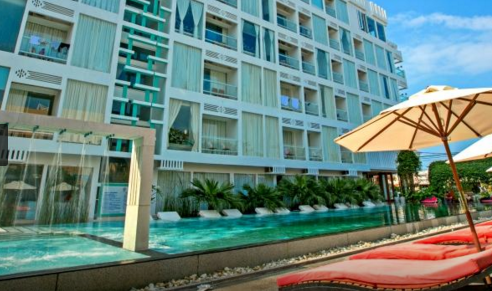From April 17, 1975 until January 7, 1979, the brutal,
ultra-Communist Khmer Rouge regime (i.e. the Red
Khmer) controlled the whole of Cambodia, then
known as 'Democratic Kampuchea.' The Khmer
Rouge was headed by Saloth Sar, nom de guerre Pol
Pot. During their short reign between one and two
and a half million Cambodians perished, some killed
outright, others dying from disease, malnutrition and
mistreatment.
Some of the horrific remnants of the Khmer Rouge
regime can be seen at the Choeung Ek Memorial
(the ‘Killing Fields’) and the Toul Sleng Genocide
Museum. Though the Khmer Rouge were driven
from power in 1979, they retreated to the mountains
and border areas, persisting until their final
defeat and dissolution in 1998. Surviving KR leaders
are only now facing the court. Kaing Guek
Eav, a.k.a. ‘Duch,’ director of the infamous S-21
prison was found guilty in 2010. Nuon Chea and
Khieu Samphan were convicted in 2014. Pol Pot
died in 1998, never having faced justice.
Toul Sleng Genocide Museum
Corner of Street 113 &
Street 350
Hours: 8:00AM-5:00PM,
daily. Closed for lunch.
Admission: $3.00
Prior to 1975, Toul Sleng
was a high school - a set
of classroom buildings in
a walled compound.
When the Khmer Rouge
came to power they converted into the S-21 prison
and interrogation facility, administered by Kaing
Guek Eav, a.k.a. ‘Duch.’ Inmates at the prison were
held in tiny brick cubicles and systematically tortured,
sometimes over a period of months, to extract the
desired ‘confessions,’ after which the victim was
invariably executed at the killing field of Choeung Ek
just outside the city. S-21 processed over 17,000
people.
The Tuol Sleng compound now serves as a museum, a
memorial and a testament to the madness of the Khmer
Rouge regime. Much has been left in the state it was in
when the Khmer Rouge abandoned it in January 1979.
The prison kept extensive records, leaving thousands of
photos of their victims, many of which are on display.
Paintings of torture at the prison by Vann Nath, a survivor
of Toul Sleng, are also exhibited.
Choeung Ek Memorial (‘The Killing Field’)
15 km southwest of Phnom
Penh - Take Monireth 8.5
km past the bridge at Street
271
Hours: 7:30AM - 5:30PM
Admission: $6.00
Many of the Cambodians
who perished under the
Khmer Rouge regime
ended up in one of the
dozens of ‘killing fields’ that can be found scattered
across the country. The ‘killing fields’ were
ad hoc places of execution and dumping grounds
for bodies. After the fall of the regime memorials
were set up at many of the sites, some containing
the bones and remnants of victims gathered from
the area.
Prior to 1975, Choeung Ek near Phnom Penh was
a orchard and a Chinese cemetery. But under the
Khmer Rouge the area became one of the infamous
killing fields. This particular killing field is the site of
the brutal executions of approximately 17,000 men,
women and children, most of whom had first suffered
through interrogation, torture and deprivation
in the S-21 Prison (now the Toul Sleng Genocide
Museum) in Phnom Penh. The Choeung Ek
Memorial is now a group of mass graves, killing
areas and a memorial stupa containing thousands of
human skulls and long bones. The memorial is
about a 20-40 minute drive from the center of
Phnom Penh. For sake of historical context, combine
your visit to Toul Sleng Genocide Museum in
Phnom Penh. See David Chandler’s book, ‘Voices
of S-21’ for the most systematic and complete
account to date of the history and operation of the
S-21 Prison.
Toul Sleng Genocide Museum
5:29 AM
0









